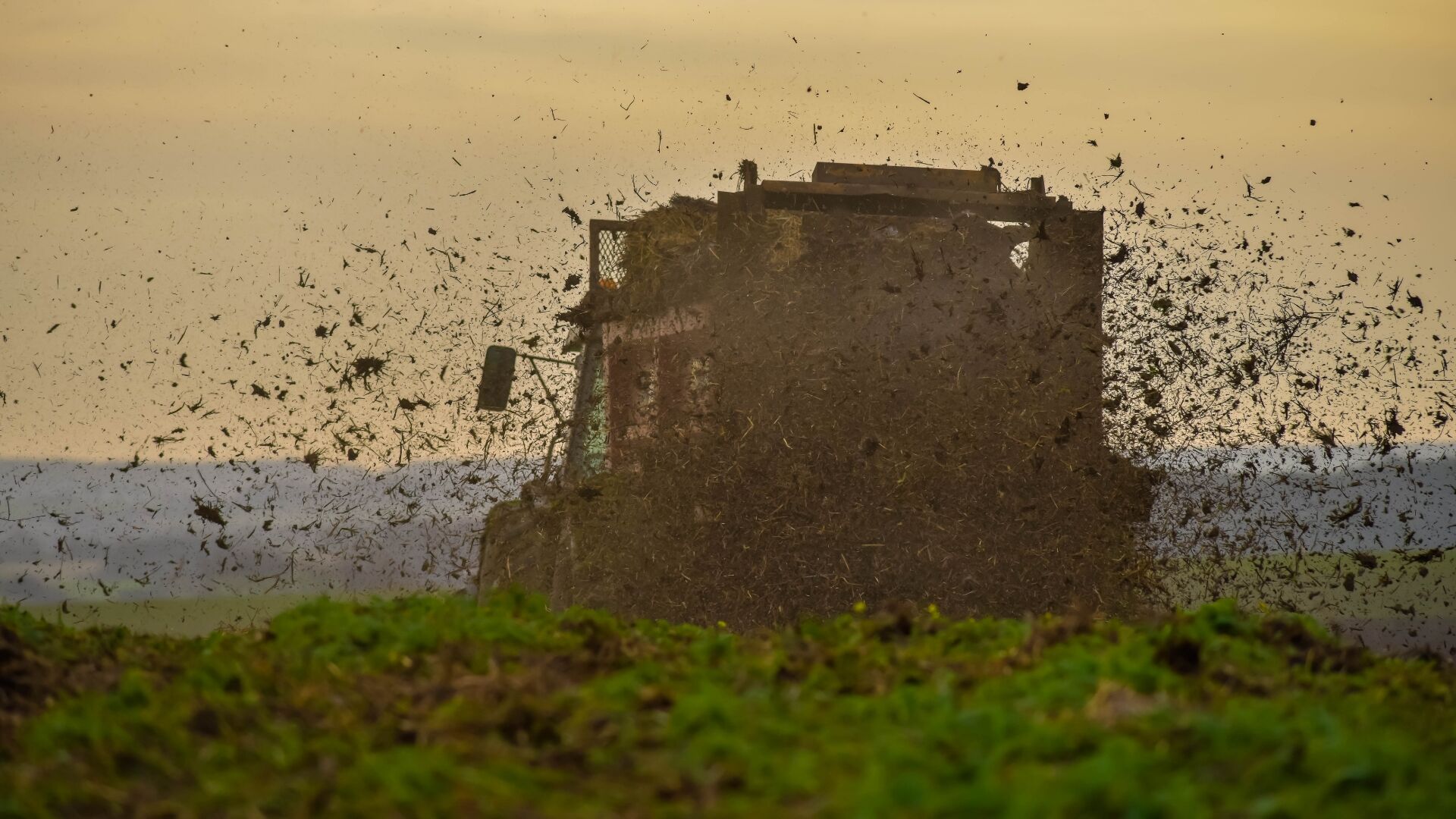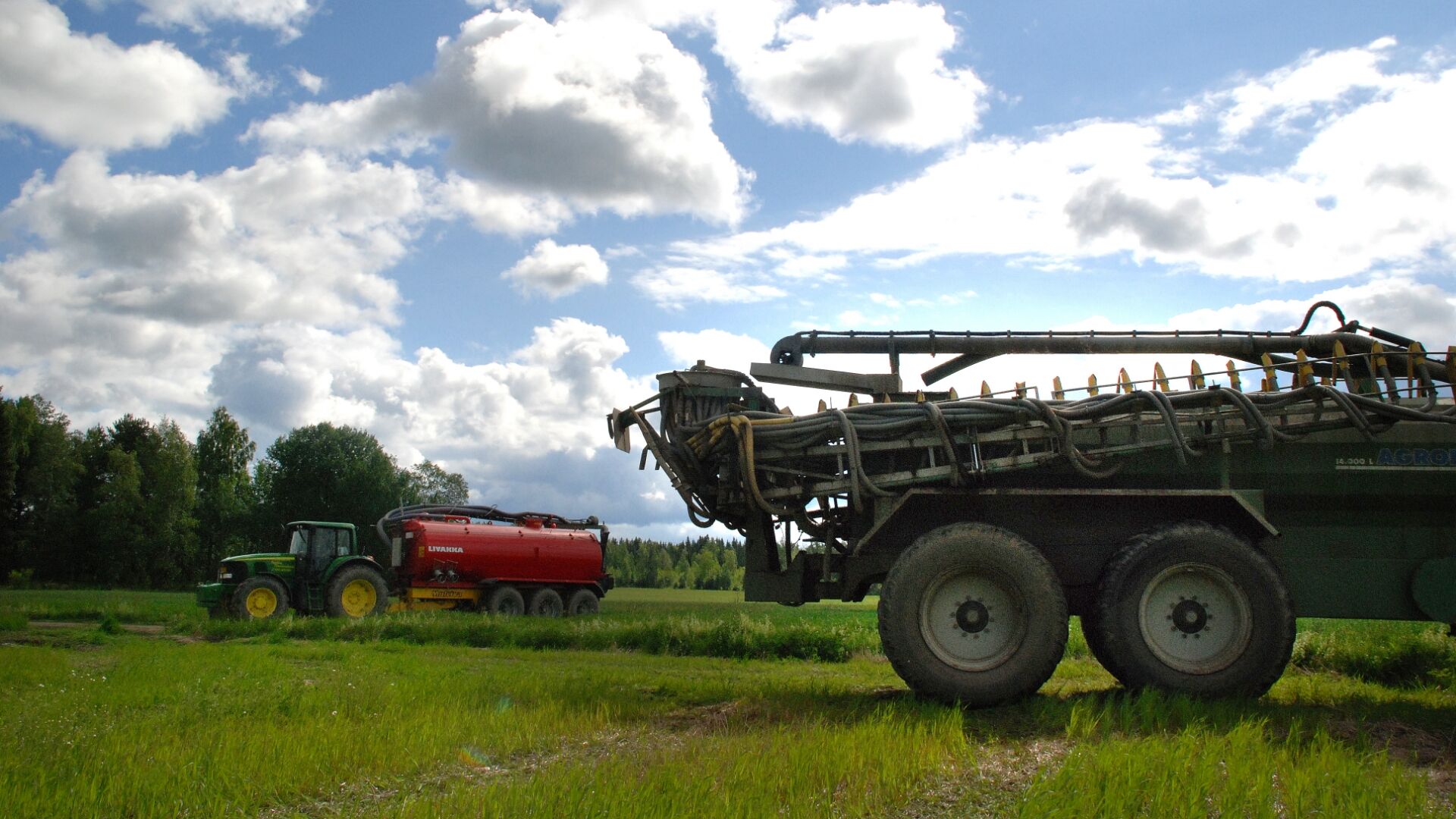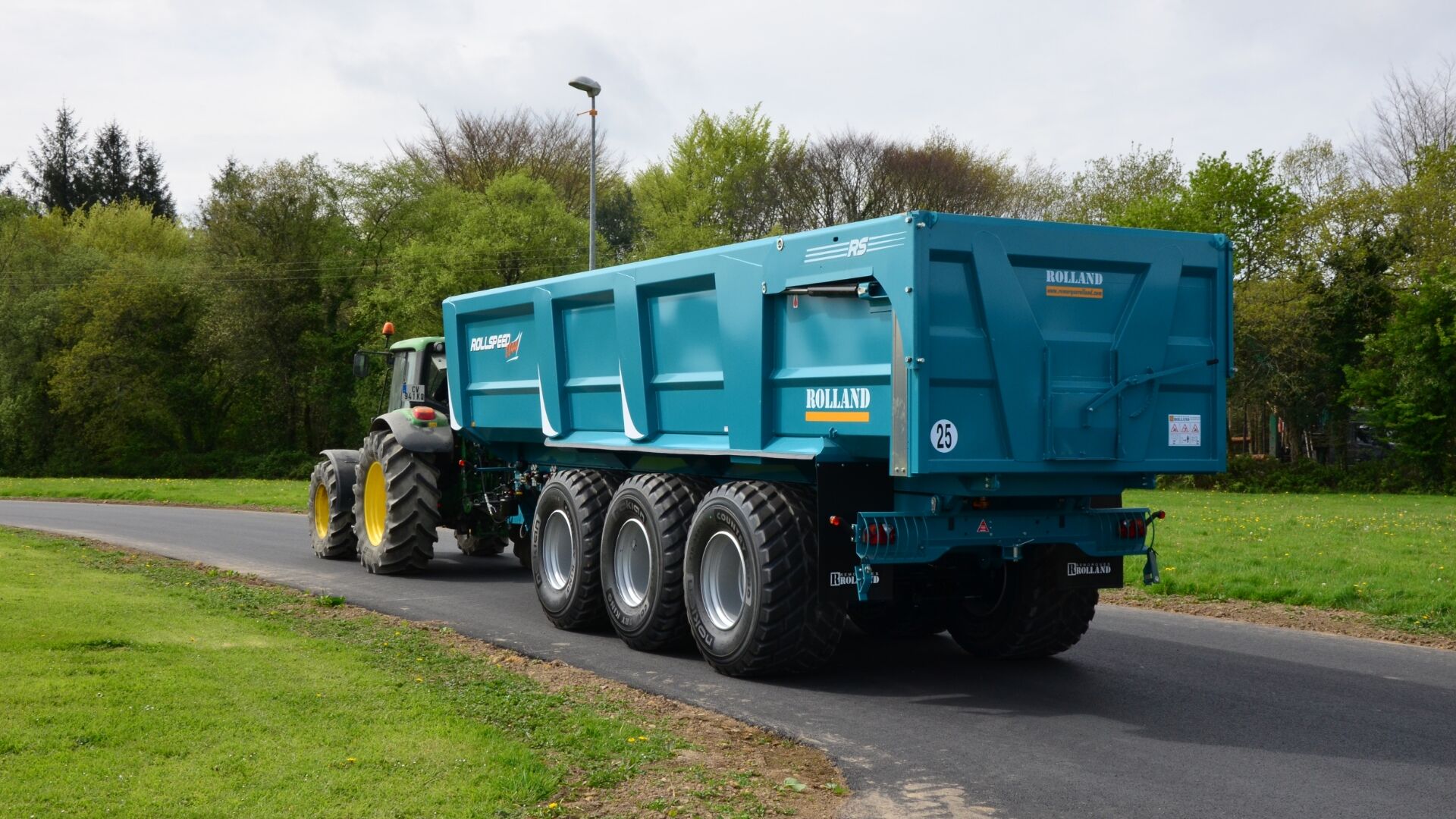

A tractor-towed manure spreader trailer enables efficient recycling of nutrients, reducing the need for commercial fertilizers. Whatever your machine, from side-spreading to rear-spreading, a good set of flotation trailer tires will improve your working efficiency.
Manure spreader, muck spreader, honeywagon… whatever you call it, the key to efficient work is the even, predictable spreading of material. This means consistent nutrient content on the soil and enables you to keep track of how much purchased fertilizer you need.

Manure spreader tires made for field
Even, constant speed makes the spreading of fertilizer more consistent. A set of flotation tires, optimized for field surface, will give confidence to your work. With a low surface pressure, good flotation tires reduce soil compression and help to increase crop yield. The lug-patterned Nokian Tyres ELS flotation tire is made for trailers used on the fields, carrying heavy loads and minimizing soil compaction.

Road transports
In the case of extensive road transport, Nokian Tyres Country King is a sturdy and versatile block-patterned flotation quality tire. Excellent, rugged, and time-proven choice for general use, Nokian Tyres Country King enables fast and comfortable road transport. The fuel-saving properties and low rolling resistance of the tire make it an economical as well as environmentally-friendly choice for agricultural work.

Slurry tanker tires
When operating a heavy slurry tanker, the tires must be up to the task. Known for its ability to carry staggering loads in earthmoving use, Nokian Tyres CT is the flotation tire for the heaviest of trailers. The cut and puncture-resistant structure and long service life of the Nokian Tyres flotation tire have impressed trailer users worldwide.
Tires


Nokian Tyres ELS

Nokian Tyres Country King
Flotation tires or metric tires?
The key feature of flotation tires, and the factor that differentiates them from standard tires, is their ability to distribute the weight of a machine over a greater surface. This enables the vehicle to “float” on the ground.
A common confusion is how flotation tires and metric tires differ from each other. The major difference between these two types of tires is actually just in the sizing. Flotation tires are normally measured in inches and metric tires in millimeters.
Flotation tire sizes
There are generally a few factors to pay attention to when considering the size of the tire. The first number, the diameter, indicates the height of the tire. The diameter is followed by the tire’s width measured from sidewall to sidewall.
You may have also seen the letters R or D in the context of tire sizes. These letters inform you about the structure of the flotation tire and indicate the degree to which the piles of the tire run to the centerline. The R stands for radial construction and here the piles are placed at 90 degrees. Meanwhile, the D stands for diagonal bias construction and contains piles that run at degrees below 90.
What are the benefits of a flotation tire?
- Flotation tires distribute weight across a larger surface
- Superior traction due to the wide tire and larger footprint
- Minimum soil compaction, rutting and slipping on heavy, wet and loose soil
- Flotation tires offer a stable and smooth ride also off-road
- High load capacity also for heavy-duty trucks
Get to know the entire selection of heavy agricultural tires by Nokian Tyres and download the technical tire manual. Find the best quality tires for different heavy machinery from Nokian Tyres, for both agricultural work and other demanding tasks.

